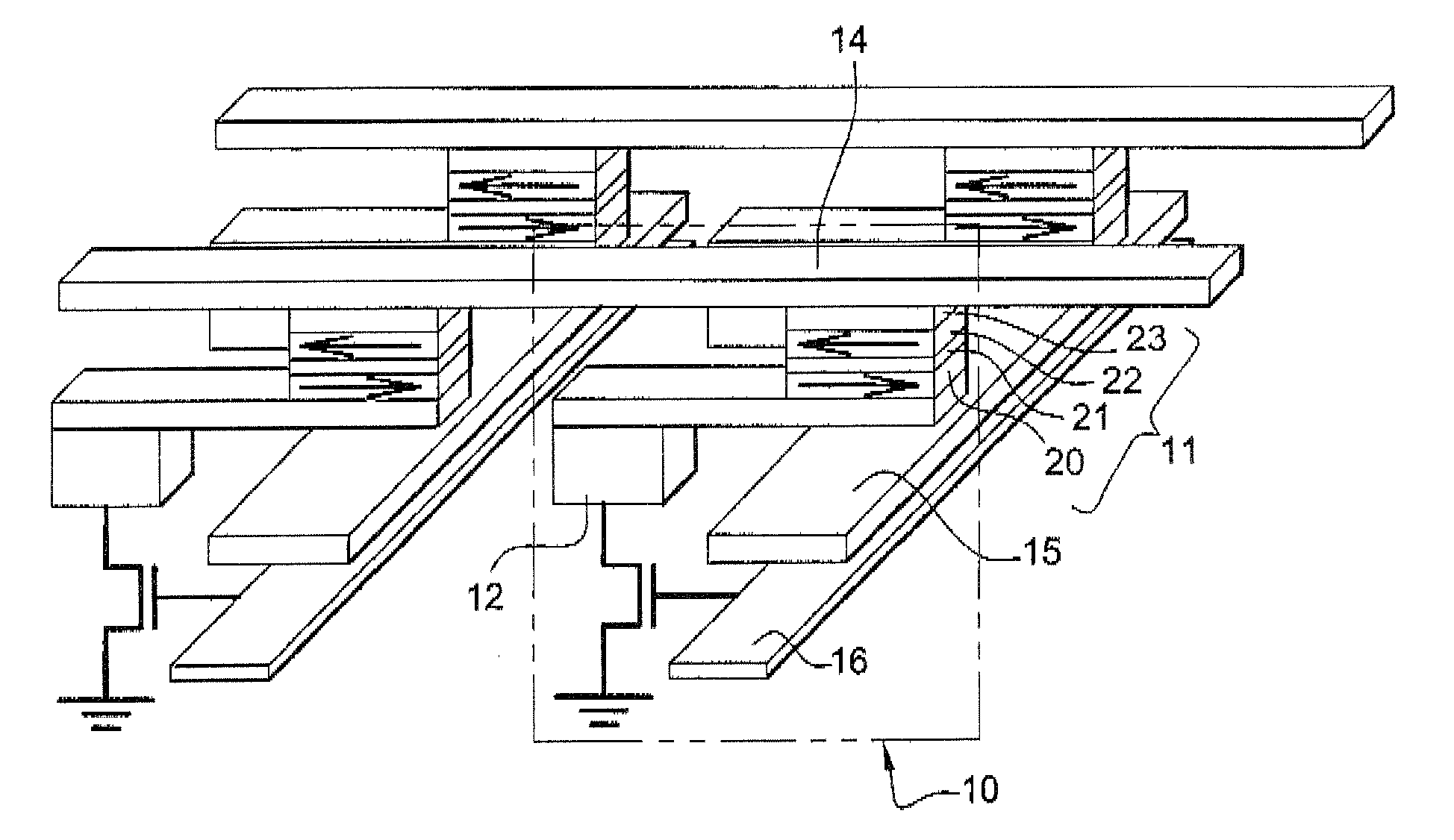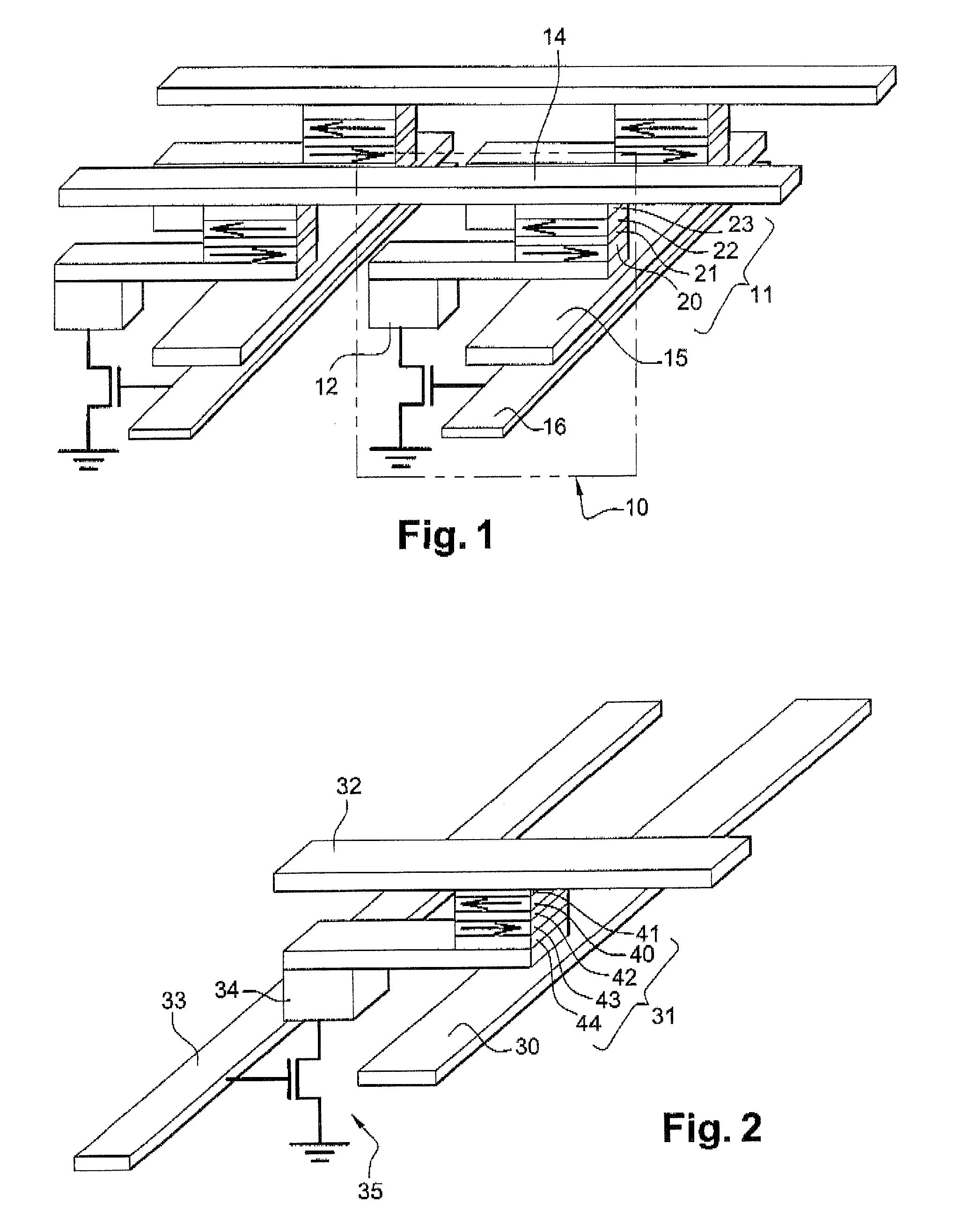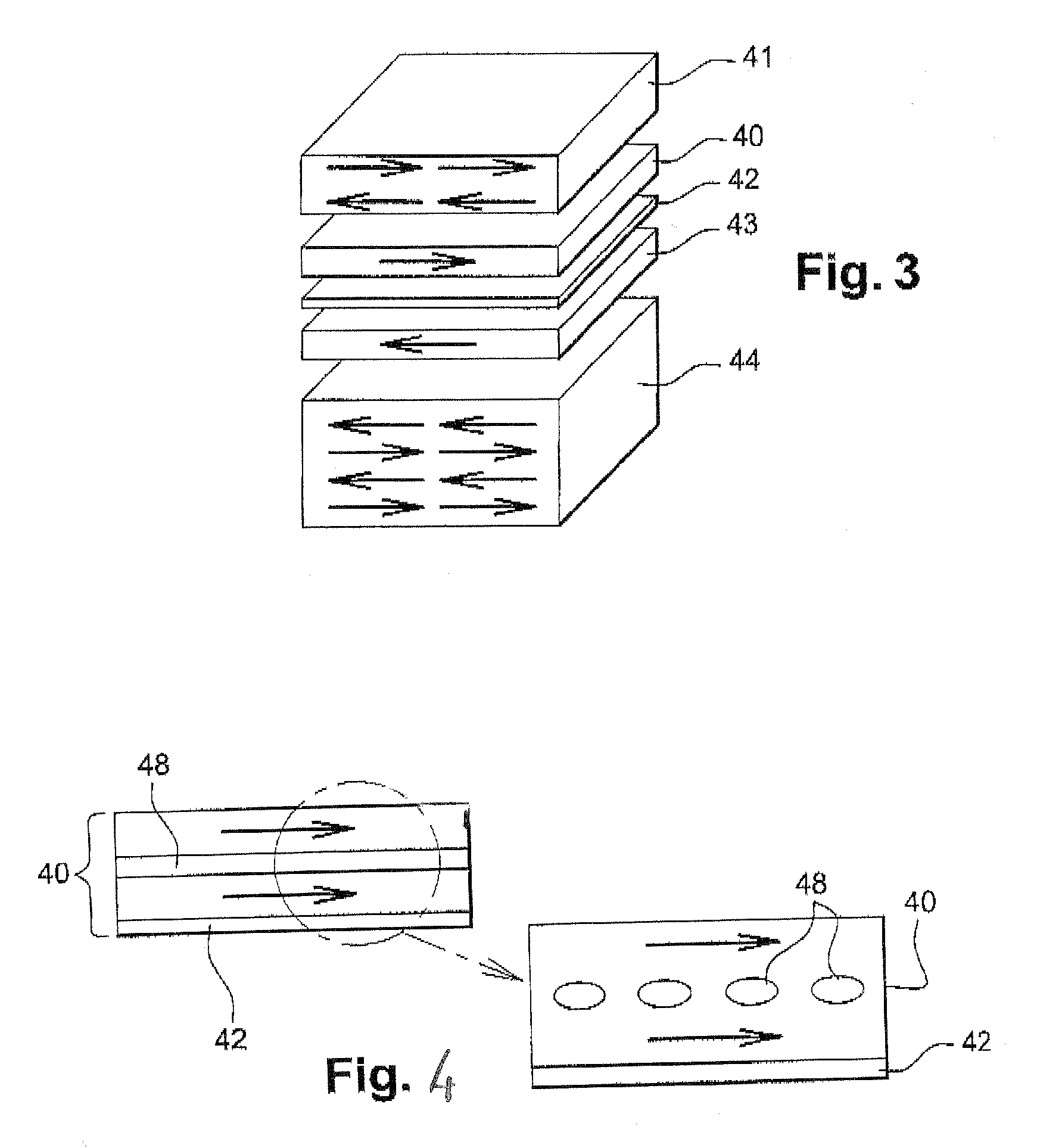Magnetic element with thermally assisted writing
a technology of magnetic tunnel junction and magnetic valve, which is applied in the direction of magnetic recording, static storage, instruments, etc., can solve the problems of limited capacity, limited integration possibility, and inability to guarantee the stability of the free layer's magnetization with respect to heat fluctuations, so as to minimize the risks of breakdown and ageing, the effect of reducing the risk of aging
- Summary
- Abstract
- Description
- Claims
- Application Information
AI Technical Summary
Benefits of technology
Problems solved by technology
Method used
Image
Examples
Embodiment Construction
[0065]The prior state of the art relative to random access magnetic memories has been abundantly described in the preamble of the present invention.
[0066]In doing so, and with the aim of simplifying the present description, a single memory point constituting such magnetic memories will be descried hereinafter in more detail.
[0067]As has already been said, the latter is fundamentally constituted of a magnetoresistive magnetic element, preferably a magnetic tunnel junction 31. The later comprises a tunnel barrier 42, selected in the group including among others aluminum oxides Al2O3 and magnesium oxides MgO.
[0068]Alternatively, the layer 42 separating the reference layer 43 from the storing layer 40 can be of semi-conducting nature (for example on the basis of silicon or germanium or of GaAs) or a heterogeneous metal / oxide layer, such as layers having a confined current path developed in the context of magnetoresistive reader heads for hard drives. These are for example constituted of...
PUM
 Login to View More
Login to View More Abstract
Description
Claims
Application Information
 Login to View More
Login to View More - R&D
- Intellectual Property
- Life Sciences
- Materials
- Tech Scout
- Unparalleled Data Quality
- Higher Quality Content
- 60% Fewer Hallucinations
Browse by: Latest US Patents, China's latest patents, Technical Efficacy Thesaurus, Application Domain, Technology Topic, Popular Technical Reports.
© 2025 PatSnap. All rights reserved.Legal|Privacy policy|Modern Slavery Act Transparency Statement|Sitemap|About US| Contact US: help@patsnap.com



